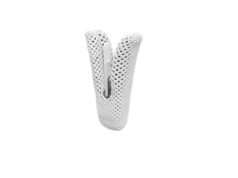The release of a letter from the US Food and Drug Administration (FDA) concerning the use of paclitaxel coated devices for the peripheral arterial disease (PAD) marks an important chapter in a long-running story.
December 2018

Data published in the Journal of the American Heart Association (JAHA), in a meta-analysis by Konstantinos Katsanos (Patras, Greece) and colleagues, suggest that there is an “increased risk of death at two and five years” following the use of paclitaxel-coated balloons and stents in the femoropoliteal artery. Some physicians questioned the finding as lacking individual patient-level data from randomised trials.
“Inclusion in SWEDEPAD studies stop!” reads a statement on the website of the SWEDEPAD (Swedish drug-elution trial in peripheral arterial disease) project, shortly after the publication of Katsanos’ meta-analysis. The decision was taken in consultation with the trial’s Data Safety Monitoring Committee.
January 2019
Industry stand by paclitaxel devices despite Katsanos’ critical study
Executives from Medtronic and Boston Scientific stated that they were not backing away from drug-eluting devices used in blood vessels in the legs, despite the findings of the meta-analysis linking them to a significantly increased risk of death at two and five years following use in the femoropoliteal artery.

US FDA evaluating paclitaxel data, recommend patient surveillance
The US Food and Drug Administration (FDA) begins the process of evaluating its recommendations for the use of paclitaxel-coated devices in the legs. While the review of data is ongoing, “continued surveillance” is recommended for patients treated with paclitaxel, though the Agency states that the “benefits continue to outweigh the risks” for approved devices used within their indications.
Patient-level analysis reports no link between paclitaxel dose and mortality
Data presented at the Leipzig Interventional Course (LINC, 22–25 January 2019, Leipzig, Germany) finds no association between paclitaxel dose and mortality. Experts expressed confidence in the continued use of paclitaxel-coated devices as a result of the release of the data.
SCAI supports continued use of paclitaxel devices
Following a review of the Katsanos meta-analysis, experts from the Society for Cardiovascular Angiography and Interventions (SCAI) issues a statement in which it claims that the “benefits of paclitaxel devices continue to outweigh any potential risks”, but says that it is keeping the situation under examination.
Polling at the 31st International Symposium on Endovascular Therapy (ISET; 27–30 January 2019, Hollywood, USA), taking place soon after the publication of the Katsanos meta-analysis, indicated that 79% of audience members did not see the findings as significant enough to change their practice. Despite this result, 31% of respondents said they would use paclitaxel-coated devices less.
March 2019
SVS announces new task force on paclitaxel safety
The Society for Vascular Surgery (SVS) pulls together a Task Force on Paclitaxel Safety to evaluate all data related to paclitaxel use in patients with peripheral arterial disease, after expressing concerns at the finding of the Katsanos meta-analysis.
US FDA updates letter to healthcare providers
Following preliminary analysis, the FDA recommend that “alternative treatment options to paclitaxel-coated balloons and paclitaxel-eluting stents should generally be used until additional analysis of the safety signal has been performed.” Elsewhere, the UK’s Medicines and Healthcare products Regulatory Agency (MHRA) convened an independent Expert Advisory Group to review the available data.
April 2019
CIRSE updates position on paclitaxel use in peripheral arteries
The Cardiovascular and Interventional Radiological Society of Europe (CIRSE) releases a statement on the use of paclitaxel-coated balloons and stents in the treatment of PAD, in which it states that, in the majority of patients undergoing lower limb recanalisation therapies, alternatives to drug-eluting devices should be used.
 CX audience deems paclitaxel not dangerous
CX audience deems paclitaxel not dangerous
Delegates at the 2019 Charing Cross (CX) Symposium (15–18 April 2019, London, UK) voted overwhelmingly against the notion that there was a demonstrable danger in any organ of the body attributed to circulating paclitaxel.
June 2019
MHRA issues medical device alert for paclitaxel use in the UK
The UK’s MHRA acted to limit the future use of paclitaxel-eluting stents and paclitaxel-coated balloons in routine clinical care following recommendations from the independent Expert Advisory Group on the use of these devices, after concluding that the statistical analysis used by the investigators in the Katsanos paper was robust.

Holden et al find no causal link between paclitaxel and all-cause mortality
Writing in a paper published in the Journal of Endovascular Therapy (JEVT) Andrew Holden (Auckland, New Zealand) and colleagues find that the methodology underpinning the conclusion by Katsanos et al that there is a positive dose-response relationship between paclitaxel and mortality is flawed.
US FDA panel reviews paclitaxel device data: No recommendations issued, as more work is needed
Following a two-day discussion, an FDA Circulatory System Devices Panel Advisory Committee concluded that there is a “mortality signal” as first described in the Katsanos JAHA paper, but that better data collection was necessary going forward, as some data were missing.
August 2019
The US FDA issues a letter to healthcare providers, in which it states that clinical studies of paclitaxel-coated balloons and paclitaxel-eluting stents “may continue and should collect long-term safety (including mortality) and effectiveness data”. This is due to “the demonstrated short-term benefits of the devices, the limitations of the available data, and uncertainty regarding the long-term benefit-risk profile of paclitaxel-coated devices”.
October 2019
A real-world safety analysis of paclitaxel-based devices in peripheral arteries, conducted by Eva Freisinger (Münster, Germany) and colleagues and published in the European Heart Journal, showed no evidence for increased mortality over a period of 11 years.
January 2020
A further meta-analysis by Katsanos, published in the Journal of Vascular and Interventional Radiology (JVIR), suggests significantly worse amputation-free survival at one year with the use of paclitaxel-coated balloons in arteries below the knee in the treatment of chronic limb-threatening ischaemia (CLTI). However, some experts advised cautious interpretation of the results and questioned whether the data would impact practice.
May 2020
Paclitaxel debate continues at virtual CX 2020
The first virtual CX Symposium, in the era of COVID-19, saw further data and discussion on the issue of paclitaxel devices in PAD. Polling during the session asked the audience: “Do you consider paclitaxel dose level to be crucial?” with 53% of respondents voting “yes”. The US FDA’s Misti Malone also offered an update onto the ongoing investigation into the issue.
June 2020
MHRA: Warning added to paclitaxel device IFUs in Europe
In a field safety notice the UK MHRA stated that a warning and clinical summary section would be added to the instructions for use (IFU) of 12 paclitaxel-coated balloons and paclitaxel-eluting stents used in the treatment of PAD of the lower limbs.
January 2021
 FDA perspective in NEJM highlights need for continued clinical studies on paclitaxel devices
FDA perspective in NEJM highlights need for continued clinical studies on paclitaxel devices
Andrew Farb, Misti Malone, and William H Maisel, representatives of the Center for Devices and Radiological Health, US FDA, authored a perspective piece in the New England Journal of Medicine (NEJM), titled, “Drug-coated devices for peripheral arterial disease [PAD]”. In the paper, they stated that clinical studies of these devices should continue and should collect long-term mortality data.
April 2021
In the presence of representatives from the US FDA and UK MHRA, an audience vote at CX 2021 saw 74% of participants support that view that “it is time to change the agency recommendations regarding paclitaxel use in peripheral interventions”.
April 2022
The UK MHRA issued an updated position statement on the use of paclitaxel-coated devices, in which it stated that such devices may continue to be used in critical limb ischaemia patients “where the benefits may outweigh the risks”. For intermittent claudication, however, the statement recommended against the use of paclitaxel-coated devices, “as the mortality risk generally outweighs the benefit”.
US FDA issues letter to healthcare providers updating its position on paclitaxel-coated devices
The US regulator issues a letter to healthcare providers on 11 July, in which it states that, based upon its review of the totality of the available data and analyses, “we have determined that the data does not support an excess mortality risk for paclitaxel-coated devices”.














